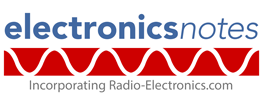Home » Component data » MOSFET data » this page
BSS139 Small Signal MOSFET
Data for the BSS139 BSS139 250V depletion mode MOSFET including electrical parameters, maximum current and voltage, pin connections, package type and many other datasheet details.
The BSS139 is a small signal N-channel depletion mode MOSFET primarily recognized for its high drain-source voltage (VDS) rating.
The standout feature of the BSS139 is its ability to handle high voltages, typically up to 250V. This makes it suitable for switching or controlling higher voltage lines where standard low-voltage MOSFETs would be unsuitable.
Key details and performance parameters for the BSS139 MOSFET.
| BSS139 MOSFET datasheet parameters & data |
|
|---|---|
| Parameters | Details |
| Brief description | Small signal 100V MOSFET |
| Package type | SOT23 |
| Operational mode | Depletion |
| Channel type | N-channel |
| Drain to Source voltage VDS | 250V |
| Drain to Source breakdown voltage V(BR)DSS) | 250V min |
| Gate to source voltage VGS | ±20V |
| Maximum drain current continuous ID | 100mA at 25°C, 80mA at 70°C |
| Maximum drain current pulsed ID | 400mA @ 25°C |
| Gate threshold voltage VGS(th) | -2.1V min, -1.4V typ, -1V max **see table below |
| Static drain source ON resistance RDS(ON) | 5.3Ω typ, 12Ω max at VGS = 0V & ID = 0.05A 2.9Ω typ, at VGS = 10V & ID = 0.19A |
| Forward transconductance gFS | 0.20 typ |
| Input capacitance | 51pF typ, 68pF max |
| Output capacitance | 9pF typand 13pF max |
| Reverse transfer capacitance | 4pF typ, 7pF maxpF |
| TJ °C | 150 |
| PTOT | 0.36W |
| Primary manufacturer | Infineon |
Outlines & pinout:
Explanation of MOSFET parameters
| Parameter | Explanation |
|---|---|
| Operational mode | This details whether the FET is an enhancement or depletion mode |
| Channel type | The channel of the MOSFET can either be an N-type channel where electrons are the majority carriers or P-type where holes are the majority current carrier. |
| Drain to Source voltage VDSS | This is the maximum voltage that can be sustained between the drain and source |
| Gate to source voltage VGSS | This is the maximum voltage that can be sustained between the drain and the gate. |
| Maximum drain current continuous ID | This is the maximum current that can be carried byt he device. Sometimes there may be a differentiation between the continuous and pulsed or peak values |
| Parameter | Explanation |
|---|---|
| Zero gate voltage drain current IDSS | This is the current carried by the device when the gate voltage is zero. The test conditions are normally stated for this. |
| Gate threshold voltage VGS(th) | This is the minimum gate-to-source voltage, VGS required to create a conductive channel between the source and drain terminals |
| Static drain source ON resistance RDS(ON) | This is the resistance of the device when turned on. The test conditions of voltage and current are normally given for this. |
| Drain source ON voltage VDS(ON) | This is the voltage across the device when it is turned on. Again the test conditions are given. |
| Forward transconductance gFS | Forward transconductance also given the letters gm is defined as the change in drain current (ΔID) for a small change in the gate-source voltage ΔVGS, with the drain-source voltage, VDS held constant. |
These are the main MOSFET parameters that have been included in our list. There are others, but these are the main ones and they help quantify the main elements of the performance.
Please note, that the data given is the best estimate we can give within a tabulated summary of this nature. Parameters also vary between manufacturers. Electronics Notes cannot accept any responsibility for errors, inaccuracies, etc, although we do endevaour to ensure the data is as accurate as possible.
Notes and supplementary information
• Availability & sources
The BSS139 is available from a number of stockists and electronic component distributors many of which are given in the table below.
BSS139 Component Distributor, Stock and Pricing
• ** VGS(th) bands
the BSS139 has suffix letters added to the part number to distinguish the various threshold voltage bands for the device.
| |
||
|---|---|---|
| Device suffix | Minimum (V) | Maximum (V>) | J | -1.2 | -1.0 | K | -1.35 | -1.15 | L | -1.5 | -1.3 | M | -1.65 | -1.45 | N | -1.8 | -1.6 |
• Applications
The BSS139 find many uses in a number of different circuit design areas. These can include:
High Voltage Switching: The ability of the BSS139 to handle voltages up to 250V makes it ideal for switching or controlling higher voltage lines.
Power Supply Startup Circuits: Depletion mode MOSFETs, including the BSS139, are commonly used in the startup circuitry of Switched-Mode Power Supplies (SMPS). They provide a path for initial current to flow to the control IC before auxiliary power rails are established.
Over-Voltage Protection: The BSS139 can be employed in crowbar circuits for over-voltage protection. In a fault condition, the MOSFET can be triggered to create a short circuit, blowing a fuse or tripping a circuit breaker to protect downstream components.
In-Rush Current Limiting: It can be used to limit the initial surge of current when a circuit is powered on, protecting components from excessive stress.
Off-Line Voltage Reference: In some simpler designs, the BSS139 can be part of an off-line voltage reference circuit.
Level Shifting: While its current handling is low, its high voltage capability allows it to be used in level-shifting applications where a low-voltage signal needs to control a higher voltage circuit.
 Written by Ian Poole .
Written by Ian Poole .
Experienced electronics engineer and author.
Return to Component Data menu . . .





